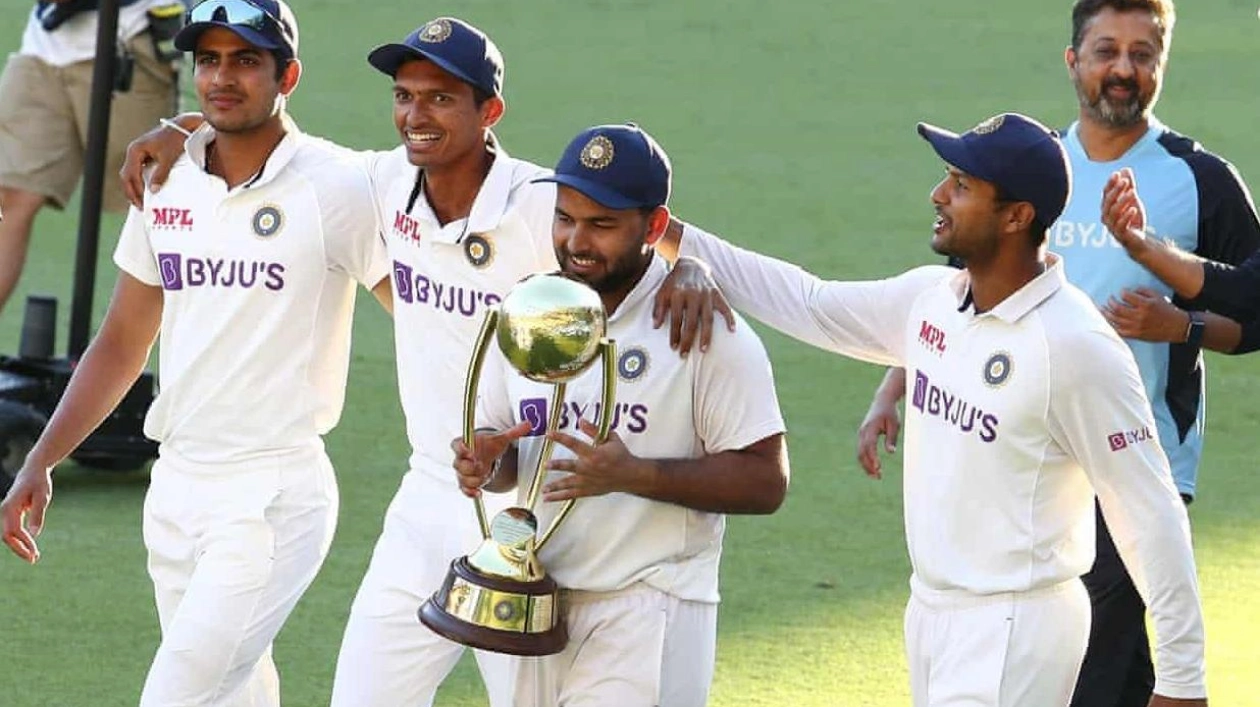Arriving in Australia during the ember weeks of 2024, the Indian Test team finds itself in an unusual position. They are, in a sense, defending champions. Since 1947, Asian teams have toured Australia 30 times consecutively without winning a series. Most of the time, they didn’t come close: Australia won 24, with six drawn. It was in January 2019 in Sydney, after more than seven decades, that India’s formidable batting lineup, leading the series, forced the home team to settle for a draw. India finished 2-1, breaking the seemingly insurmountable barrier. Two summers later, due to the vagaries of a new touring schedule, India returned and did it again, sealing the same scoreline with a legendary run chase in Brisbane.
India became the first subcontinent team to figure out how to win in Australia, defeating the home team’s first-choice bowling attack both times. Then, last year, when the roles were reversed and Australia toured India, they were soundly beaten in Nagpur and Delhi, allowing India to maintain their grip on the Border-Gavaskar Trophy in record time. India had been unbeatable at home for over a decade, but now they faced a new challenge. While they should be favorites, given their recent successes, the long history of Australian dominance still looms large. Had India achieved similar victories in other tough venues, the perception might be different, but cricket has seen few all-season teams.
During their span of beating Australia, the Indian team lost both Tests in a brief tour of New Zealand and then the World Test Championship final to the same opponent in England. They also missed out on a series win in South Africa twice, losing 2-1 before a shortened series denied them a chance for a decider at 1-1. The closest they came to global dominance was in England in 2021, leading a series 2-1 against a traditional rival, but the fifth Test was canceled due to pandemic concerns. When they finally tried to finish the job a year later, the team under Virat Kohli had to restart under Rohit Sharma, while England, under Joe Root, was rejuvenated by Ben Stokes, and the moment was lost.
India’s home record of a dozen unbeaten years came to an abrupt end this month. New Zealand, despite the disparity in resources, consistently performs better against India than other teams. They didn’t just scrape a win through draws or a short series; they beat the home titans three times out of three, including bowling India out for 46 and 156 to set up the first two matches, then 121 to seal the third. Since 2012, Home India has been a formidable Test force, but a few overseas disappointments would have removed the caveat. However, the nature of teams changes, and Away India has never been a cohesive unit. Home India had Ravichandran Ashwin and Ravindra Jadeja dominating opponents, supported by a local cast. Away India had Kohli with the bat and often little else.
Is there any point in looking at recent Indian achievements to predict the upcoming series? The team that clinched victory in Brisbane in 2021 was famously drawn from the far ends of the squad’s bench, but nine of that XI will likely be gone from the team this week in Perth. Rohit and Shubman Gill are temporarily missing, Washington Sundar seems unlikely to be picked. Only Rishabh Pant as wicketkeeper is a sure bet, while fast bowler Mohammed Siraj might join him, depending on the bowling configuration. Such are the uncertainties of Indian selection. Sarfaraz Khan, who scored 150 in a Test match three games ago, has been moved down the order and is likely to be dropped for Dhruv Jurel. Devdutt Padikkal, who has played one Test, will now bat at three in one of India’s biggest series, with his spot depending on Gill’s injury. Yashasvi Jaiswal is the new opening sensation who has emerged in the last 18 months.
In the bowling support ranks, Harshit Rana and Nitish Reddy would be making their debuts, while Akash Deep and Prasidh Krishna have seven Tests between them. The veterans include Kohli, Ashwin, Jadeja, Jasprit Bumrah, and KL Rahul, none of whom were part of the Brisbane victory in 2021. Australia will field the same bowling attack for the third series running, though the batting lineup has changed. Does it still hold weight to say that India won last time? More likely, this is a new challenge for a largely new group of players, who will still face the difficulty of trying to outweigh Australia’s long history against touring teams. Their task is steeper, too, with five Tests instead of four – winning two matches may no longer suffice. They can look to last time as a reminder that the unexpected can happen, but only as we all look at stories of those who came before us. If they manage to emulate that, perhaps it will be less a sequence, more a reminder that anomalies can coincide.
Source link: https://www.theguardian.com






